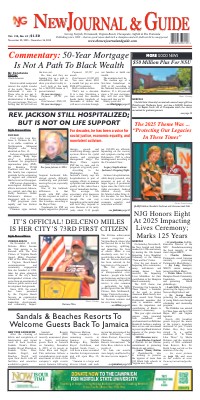Tech
Digital Download: Recognition vs. Identification – What’s the Difference?
Delegate Cliff Hayes Jr. breaks down the differences between recognition, identification, and verification in facial recognition technology, stressing why understanding these terms is crucial for privacy, fairness, and democracy.
#FacialRecognition #AItechnology #CivilRights #PrivacyMatters #TechPolicy #BiometricSecurity #AIethics

By Delegate Cliff Hayes Jr.
When we hear the term “facial recognition,” it often gets used as a catch-all, but in technology there are important distinctions worth understanding. Breaking these down can help us better grasp both the benefits and risks of these tools.
Facial Recognition is the broadest category. It refers to any system that can detect and analyze faces. For example, when Facebook once suggested tags for people in your photos, or when a security camera software detects that “a face” is in the frame, that’s recognition at work. It doesn’t always mean the system knows who the person is. It just recognizes that a face is present.
Facial Identification is more specific. This is the one-to-many process where an unknown face is compared against a database of known images. Law enforcement, for instance, may take a still shot from surveillance footage and run it against a database of DMV photos or mugshots to try to identify a suspect. The question being asked is: “Who is this person?”
Facial Verification is the one-to-one process. This is what you use when unlocking your smartphone with Face ID or passing through an airport kiosk that checks your face against your passport photo. In this case, the system is not searching across a database. It is confirming whether the face in front of it matches a single claimed identity. The question is: “Is this person who they say they are?”
Understanding these distinctions matters. Facial recognition in general can be useful for convenience and security, but identification and verification carry different implications for privacy, civil rights, and fairness. As this technology grows in use, from unlocking phones to monitoring public spaces, it’s critical for our community to know exactly what these terms mean and how they affect our daily lives.
In a democracy, we must ensure these tools protect people, not profile them.


 Black Business News1 week ago
Black Business News1 week agoBeyoncé Enters Billionaire Ranks Few Black Americans Have Reached

 Black History1 week ago
Black History1 week agoEmancipation Observances Began In 1863 Norfolk & S.C.

 Impacting Lives7 days ago
Impacting Lives7 days agoUtility Costs Are Rising Nationwide, Including Virginia

 Black Arts and Culture1 day ago
Black Arts and Culture1 day agoCelebrating Imani For Kwanzaa In Hampton Roads

 Black Business News2 days ago
Black Business News2 days agoBlack America’s Cultural Icons Whom We Lost in 2025

 Black Business News2 days ago
Black Business News2 days agoOur Path Forward To 2027

 Entertainment2 days ago
Entertainment2 days agoBridge Corner: The American Bridge Association (ABA)

 Black History6 days ago
Black History6 days agoHonoring a Hero Instead of a Traitor



















